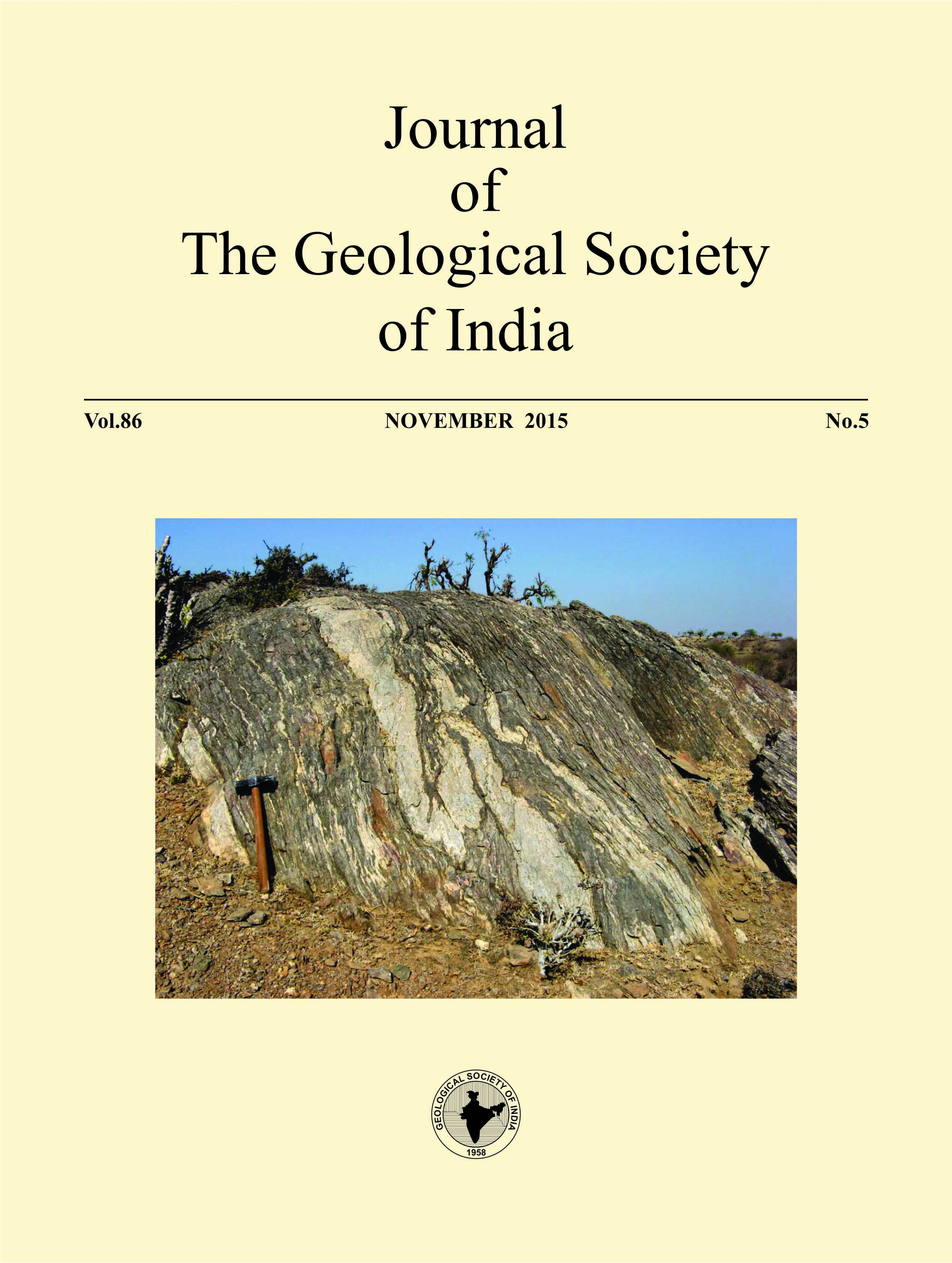Rainfall and Anthropogenically Accelerated Mass Movement in the Outer Himalaya, North of Dharamshala Town, Kangra District, Himachal Pradesh: A Cause of Concern
Keywords:
Tira Lines, Landslide, Sewage, Infiltration, Himachal Pradesh.Abstract
The present study has been done to evaluate the lithotectonic, geomorphic, hydrological and climatic factors responsible for the Tirah Line landslide, as well as, the anthropogenic factors that have augmented the damage potential of the slide. The town of Dharamsala and its suburbs in the Kangra valley provide a type example where unplanned development and urbanization has added to the hazard from landslides beside other factors. A devastating landslide occurred on 7th August, 2013 near Tirah Line locality of Dharamsala cantonment area, district Kangra, Himachal Pradesh, and damaged more than 25 houses completely. An estimated 0.1 sq.km of area of unconsolidated mass slid SSE down the terminal part of a thick alluvial fan on the left bank of the local drainage. The slide occurred after continuous heavy to very heavy rainfall for 4 days in August 2013 in the region when all the drainage remained in bankful position. Factors involved in slide were steep slope, continuous infiltration of water soak pits (sewage system) located up slopes, continuous heavy to very heavy rainfall and toe erosion by local drainage. The slide was moved in multiple phases due to continuous rainfall in the area.Downloads
Issue
Section
Downloads
Published
How to Cite
References
AMBRASEYS, N. and BILHAM, R. (2000) A note on Kangra Ms=7.8 earthquake of 4 April 1905. Curr. Sci., v.79, pp.101-106.
BARTARYA, S.K. and VALDIYA, K.S. (1989) Landslides and erosion in the catchment of the Gaula River, Kumaun Lesser Himalaya. Mount. Res. and Development, v.9(4), pp.405-419.
GUPTA, V., SAH, M.P., VIRDI, N.S. and BARTARYA, S.K. (1993) Landslide hazard zonation in upper Satluj Valley, District Kinnaur Himachal Pradesh. Jour. Him. Geol., v. 4, ( No.1), pp. 81-93.
GUZZETI, F. (2005) Landslide hazard and risk Assessment, Dissertation (Italy), 373p.
KUMAR, S. and MAHAJAN, A.K. (1991) Dharamsala seismotectonic zone –Neotectonic and state of stress in the area. Jour. Him. Geol., v.2(1), pp.53-57.
KUMAR, S. and MAHAJAN, A.K. (2001) Seismotectonics of the Kangra region, Northwest Himalaya. Tectonophysics, v.331, pp.359-371.
MAHAJAN, A.K. and VIRDI, N.S. (2000) A report on preparation of Landslide hazard zonation map of Dharamsala town and adjoining area, district Kangra (H.P.). Technical report, Wadia Institute of Himalayan Geology, Dehra Dun March, 2000 ref. No Endst/281/MA dt 27/2/99, 45p.
MAHAJAN, A.K. and VIRDI, N.S. (2001) Urbanization vis-a-vis landslide activity and slope failure in and around Dharamsala, District Kangra, Himachal Pradesh. Bull. Indian Geol. Assoc., Spec. Issue, v.34 (1-2), pp.181-196.
RAJWANT and SHARMA, U.K. (2007) Landform and slope instability in Himachal Himalaya- A case study of Baner Khad watershed, Himachal Pradesh. Ziet. Fur. Geomorphologie, v.51, pp.95114.
SRIVASTAVA, H.N., DUBE, R.K. and HANS RAG (1987) Space and time variations of seismicity pattern preceding two earthquakes in Himachal Pradesh. Tectonophysics, v.178, pp.69-77.
STARKEL, L. (1972) The role of catastrophic rainfall in the shaping of the relief of Lower Himalaya (Darjeeling Hills). Geographia Polonica. v. 21, pp.103-147.
VIRDI, N.S., SAH, M.P. and BARTARYA, S.K. (1995) Project report: Landslide hazard zonation in the Beas and Satluj Valleys of Himachal Pradesh, phase-I Satluj Valley, Wadia institute of Himalayan Geology .Technical Report (unpublished), 132p.

 Rajwant Sharma
Rajwant Sharma


